Creativity
My cluttered workspace 🫣
I took the pictures below to illustrate a point in a conversation I was having on Mastodon, but something unexpected ended up happening.
I arranged my desk so that I can comfortably type on the K380 and, at the same time, easily reach the Touch ID sensor on my MacBook Air. At my right, not visible, there’s a Mac Mini and another screen where I produce my videos. I use the same keyboard and trackpad through Apple Continuity.
It took me many trials and errors, but I love this arrangement. Not only that, I’m proud of my creation. I built several of the parts, including the sliding extension for the keyboard. Everything is easily accessible and highly efficient. Now, can you guess how the AI-generated captions of the pictures start the description of my desk?
“A cluttered workspace”. 🤪
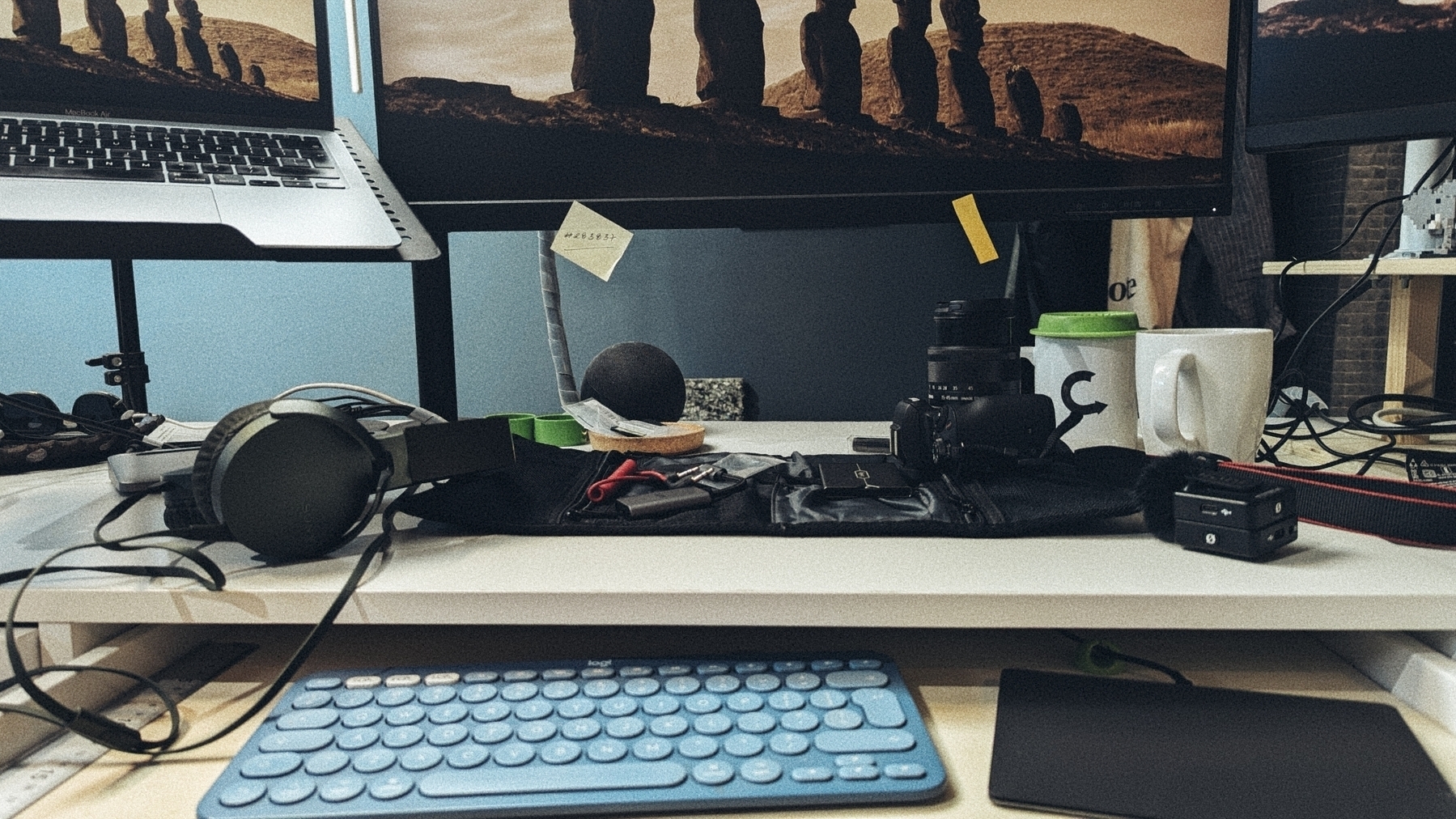

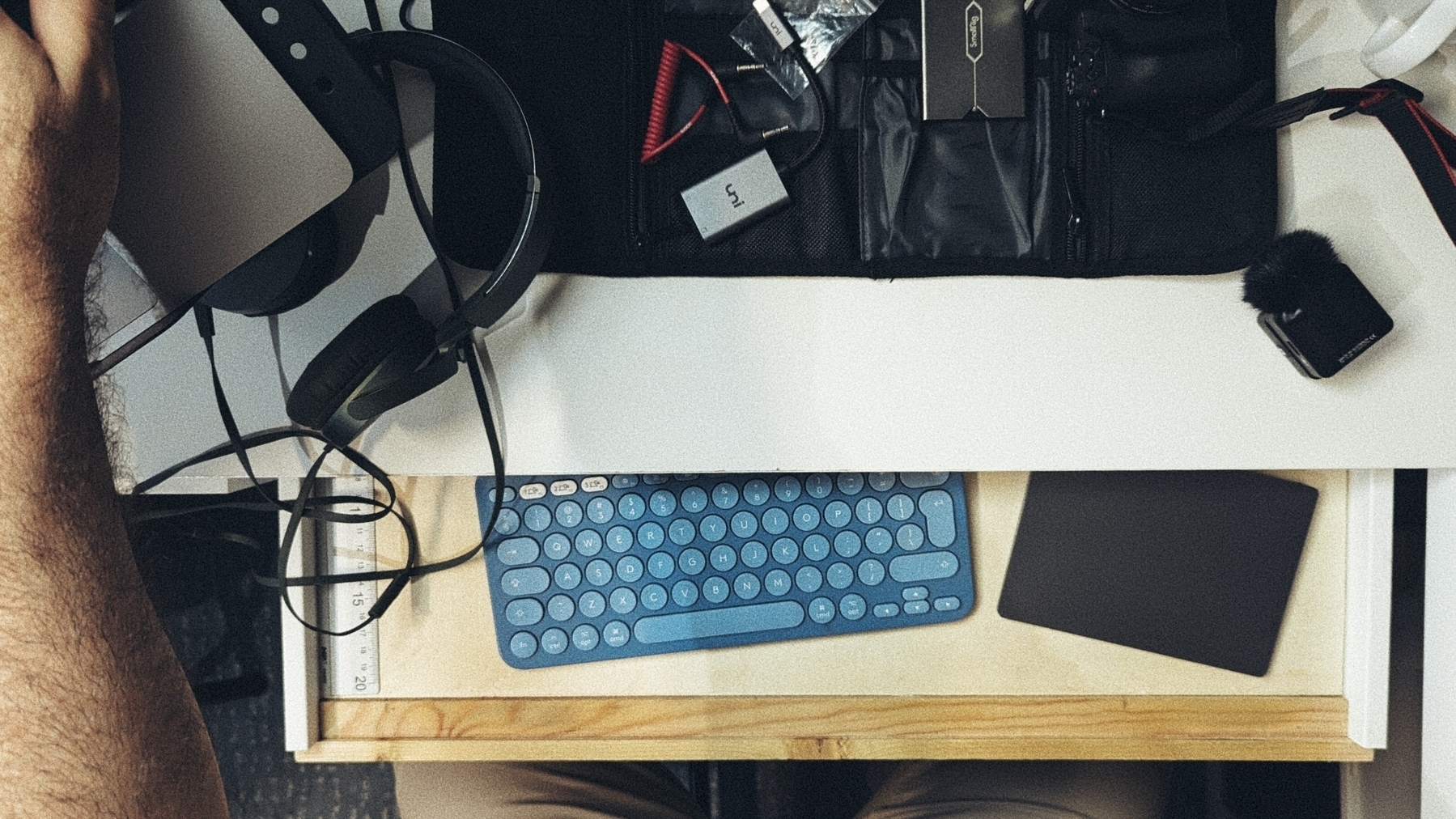
The video below will give you an idea of my workspace. It’s from 2023, and I have made minor adjustments, as predicted at the end of the video. Nevertheless, the computers and most of the items remain the same.
The best productivity and organization books in my library (not what you think)
People often ask me for book recommendations on topics such as productivity and organization, but I can never think of anything to suggest. Instead, I tell them that the books that help me are usually not the traditional ones explaining methods or techniques.
We are all unique and have different needs. Furthermore, we are exposed to such diverse environments. How is it possible that a single method will be effective for everyone? Some authors even claim that, although their method is excellent if fully implemented, you are free to use the parts and processes that best fit you. How convenient is that?
Containers
The way I organize my information is through what I call containers. I have notebooks in Evernote or folders in Obsidian that let me quickly switch from one project or reference material to another whenever I need to or want to do so. And by the way, there’s no archive in my system. Everything is always exposed because that’s where creativity feeds from.
For example, if I’m working on something and have an insight for another project, all I have to do is open the other notebook or folder, take some notes, and then go back to what I was doing before. The cmd + j (Mac) or Ctrl + q (Win) commands on Evernote make it a breeze. Unfortunately, I am still looking for something as efficient on Obsidian.
But if what comes to my mind is entirely new, I will create a new container and decide what to do with it in the future.
I have a video on my organization system coming soon. For now, I suggest you watch the one below to give you an idea of when a new container is created and how it evolves.
When I have reached my limits working on a topic and need a moment or two to relax, switching to another personal or work-related project is what helps me.
I can leave and work on another container because I have all the information and progress in each one. So, when I arrive at the subsequent container or revisit a previous one in the future, everything will be there exactly as I left it.
The Best Books
Let’s get back to the books. The best ones usually have nothing to do with productivity or organization. The more I read about different topics, the more it seems like every book has something that can help me become more efficient. Every so often, it’s a single sentence; other times, a paragraph or two from a 600-page book.
I’m currently reading the biography of Louis Mountbatten, and I came across two strategies that I’ve been using for a while and that I’ve seen mentioned repeatedly in the oddest books and articles.
My System
I learned very early on that I had to take notes to make sure I didn’t forget something. It took me a long time to figure out a system, but when I stopped looking for external solutions and focused on my needs, it all came together.
Creating my own version of a basic CRM with notes about everyone I met was the first thing I did. This happened before Evernote, so I used the description section of each contact on my Palm Pilot to take my notes about the person and each meeting. It was both simple and extremely helpful. People were always amazed at my memory. And every time I told them about my secret, they were even more impressed.
I have never stopped doing it, and the system evolved when I moved to Evernote and then to Obsidian. But what if I told you this idea is as old as time? Take a look at the passage below. Mountbatten was doing the exact same thing in the 1930s.
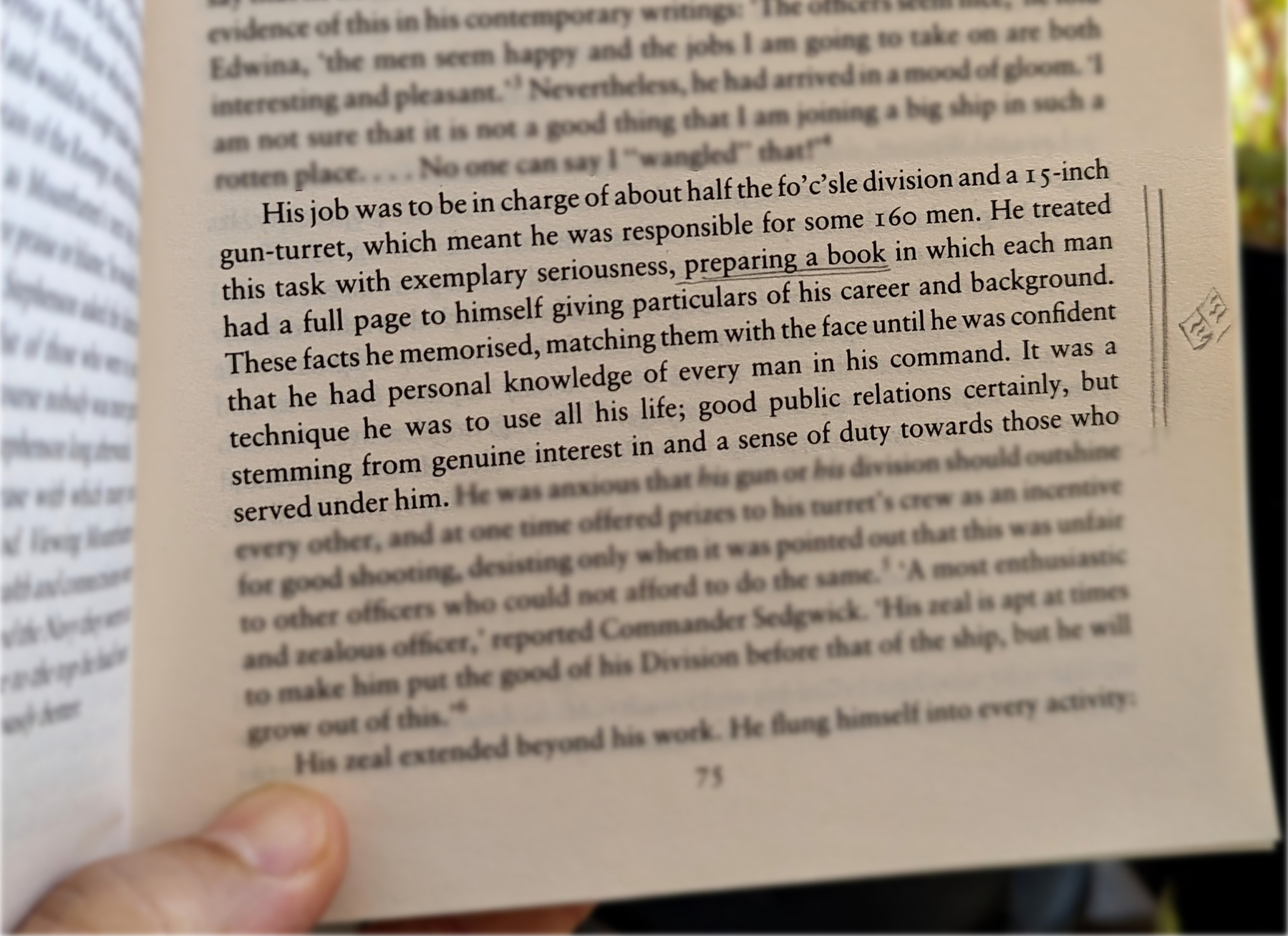
Do you remember my containers with information? Those were also born on my Palm Pilot, but they were in the Memo Pad app. The topics were organized so that I could easily add or find information.
However, it was only when I started using Evernote that I was able to create containers that would allow me to switch from one project or topic to another when I needed to escape exhaustion. Once again, I will soon release a video detailing my approach to managing all the information I keep in these containers. For now, let’s take a look at the other strategy used by Mountbatten.
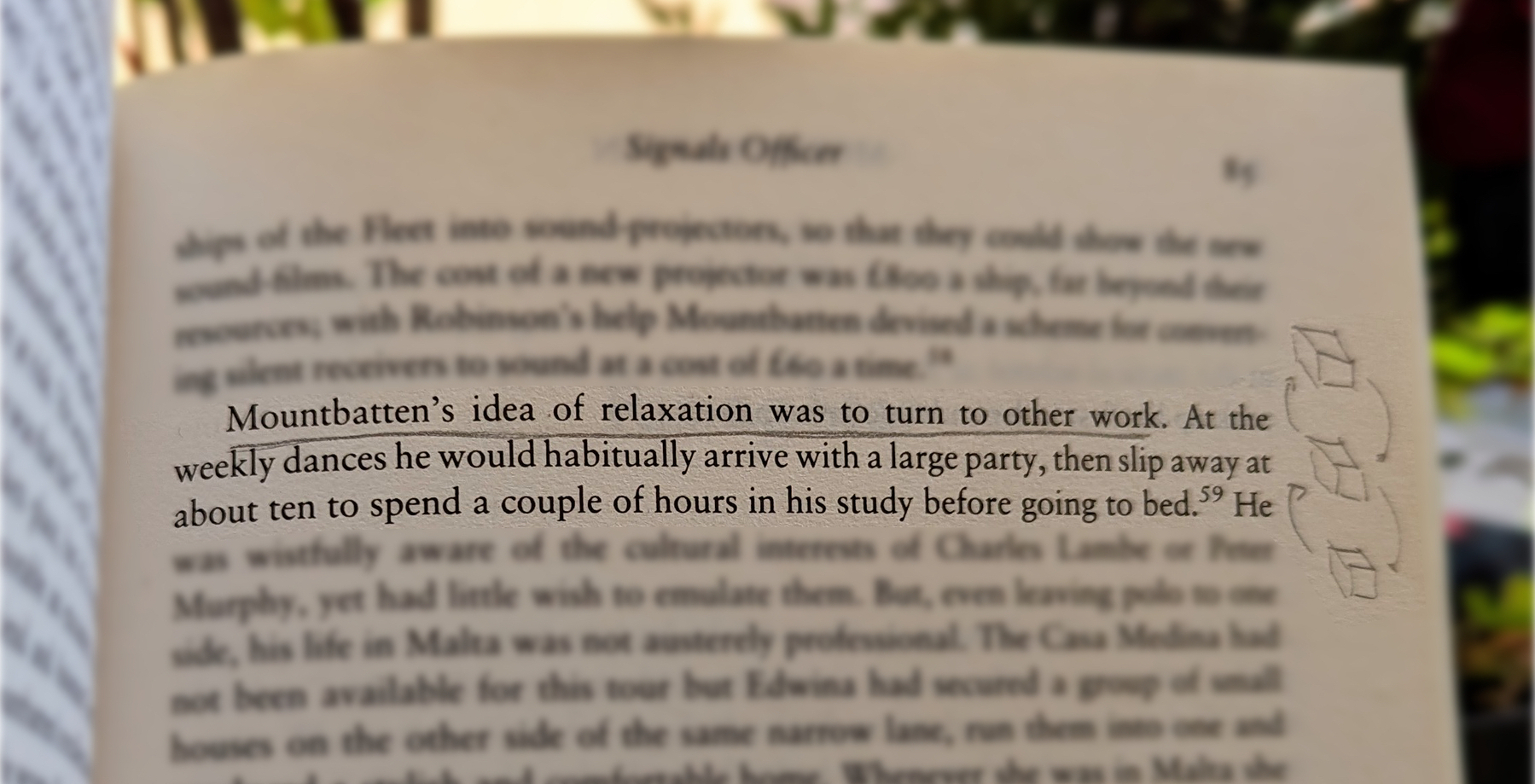
When he needed to relax, he would turn his attention to another project. Isn’t that cool?
Now, who is Mountbatten, you ask? A last-century specialist in organization and productivity? Far from it, but I’ll let you do your investigation on that.
The other day, the YouTube algorithm led me into a rabbit hole about devices where we can only do one thing: type. Most of them have a small screen and a keyboard. That’s it. After watching more videos about this topic than I should have, I couldn’t stop thinking about how different people are.
That would never work for me. I frequently [[vladcampos.com/Timeline/Blog/2020s/2022/2022-05-02 Getting away from the problem for a while often leads to new insights|need to escape from my writing when I’m stuck]]. And if I’m being honest, I’m always escaping, regardless of what I’m doing. Distractions are an integral part of my creative process. I need them!
Okay, time to get back to the article I was working on 🫣
Without experiencing the unknown variables, it’s impossible to organize efficiently
I believe the best way to organize things, whether they’re physical or digital, is to accept the mess for a while. At least it works very well here. That’s why my strategy for organizing things is to always start with a messy environment, a blank canvas to play with. However, there’s a catch: I have to pay close attention to what I’m constantly searching for and using.
It is only after rearranging things again and again and learning my necessities that I am finally ready to begin building the system that will meet my needs. But, there is no doubt in my mind that that will not be the final version. The world around us constantly changes, and we must adapt to keep up.
The tricky part is figuring out the exact moment when the messy stage has to give way to some order. I like to use a concept I borrowed from economics: Transactions Costs. In other words, if the mess is making me less and less productive, it’s time to pause and organize by choosing the best workflow I’ve come up with so far.
If you haven’t already, I encourage you to watch the video below. It’s about an Evernote notebook being built from empty to fully functional. It started out messy, and I added tags, links, etc. as I learned what I was constantly looking for and using.
And like I said before, it’s a strategy that works in both the digital and physical worlds. Last week, I finally organized my workbench, inspired by the way I moved objects around when I was working on the Apple IIe restoration project. I’m pretty happy with the final result, but I already had new ideas for it.
The messy approach is also a way to foster creativity. There are many good books about this subject. There’s one literally titled Messy, but The Click Moment and Algorithms to Live By also discuss it.
Moving things around forces us to look at a problem from a different perspective, which helps us come up with unexpected solutions. But it is important to keep in mind that the project on which we are currently working is not our sole concern. In my case, the messy workspace was also a project in progress.
Take a look at the shelf and the soldering station; they are all made from scrap wood. By the way, I love that cool industrial vibe. You can even tell from the black circles on one of the shelf legs that the piece of wood was once below the table glass. It was a test; I was trying to figure out how many crossbars I needed to keep everything stable, and I ended up replacing the studs with the thicker ones that are there now. As for the rest of the replaced pieces of wood, they were used on other projects.
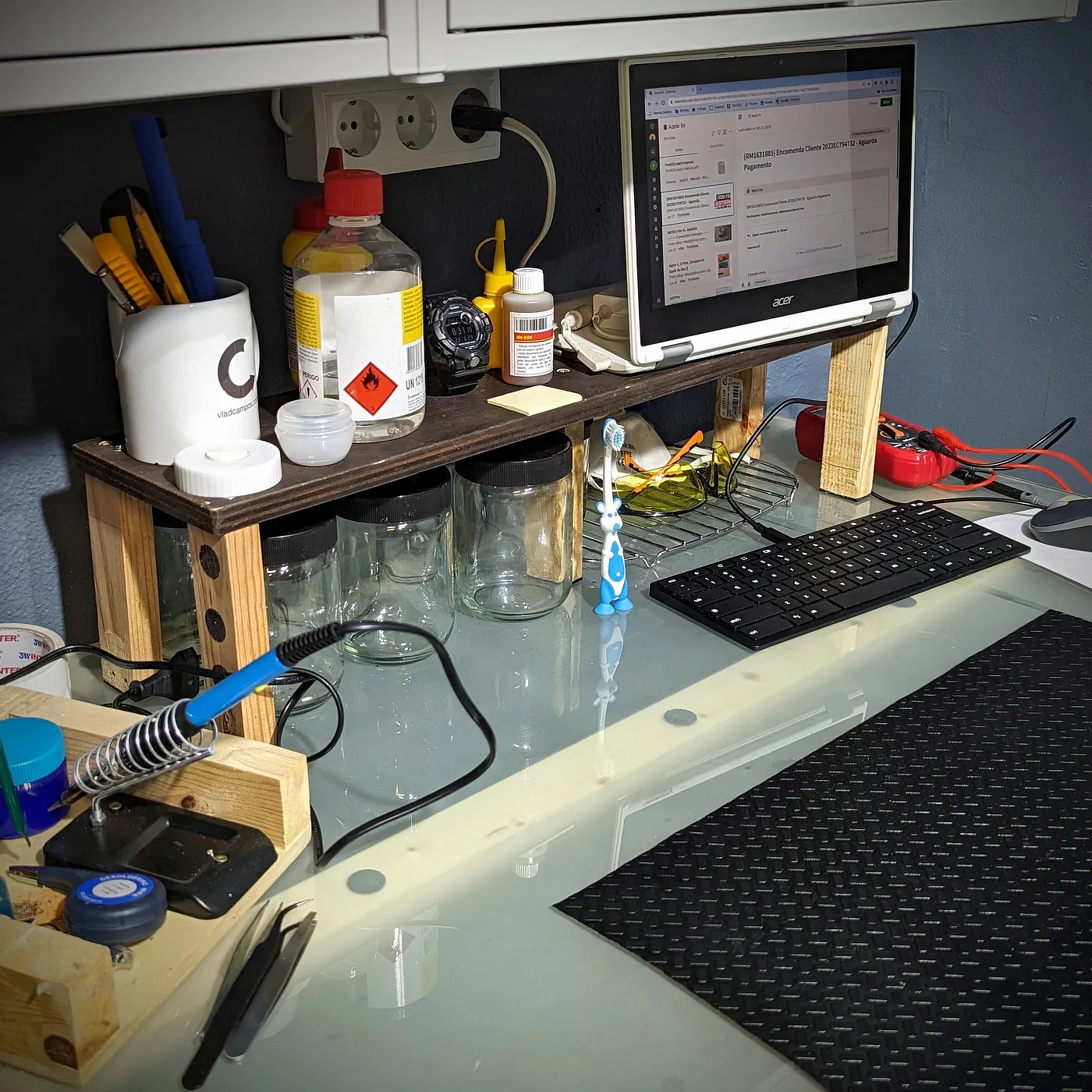
But there are more repurposed materials. The desk itself is made up of the top glass of an old kitchen table, supported by some cheap Ikea trestles. As for that Chromebook, it will not get Chrome OS updates anymore, but it is still good enough for Google searches and the Evernote web client.
So, the next time you are working on a complex project, don’t be too hard on yourself. Every so often, a little mess is what you need to unlock a solution that was always there, but you couldn’t see.
By the way, switching to another project also works, but that’s a story for another time.
Getting away from the problem for a while often leads to new insights
Taking a break is as important as getting into the flow
It’s my belief most people come here for the free Wi-Fi. Not me. I have an office, that is also my studio, and even a comfortable home office. But I do my best to come to this Starbucks at least once a week to edit a video.
Why?
I call it my Coffee Office Day. And last Friday was a special one. The city streets are not empty anymore. On contrary, everything is getting back to normal. I’m hearing people speaking English, French, Spanish and some other languages I have no idea what they are.
Welcome back, Porto!
Randomness
Have you read The Click Moment, from Frans Johansson? One thing I’m looking for when I come here is getting away from my comfort zone.
You need to take time, even schedule time, to explore things that are not directly related to your immediate goal. You need to take your eyes off the ball in order to see and connect with the possibilities around you.
—Frans Johansson
The Flow State
There’s more. When I’m here, I seldom ask for the Wi-Fi password, or connect my phone to the computer. My goal is to avoid online distractions, and, at the same time, enjoy people speaking a multitude of languages. I love to edit here. As soon as I sit down and open my computer, I enter the Flow State. It’s magical.
Flow is great, but one has to escape from it once in a while to avoid exhaustion and to break the blind alleys’ paralysis. At my office I have a different strategy, but here I do it by raising my head and looking around for a while. It never fails. In essence, this is how the Pomodoro Technique works.
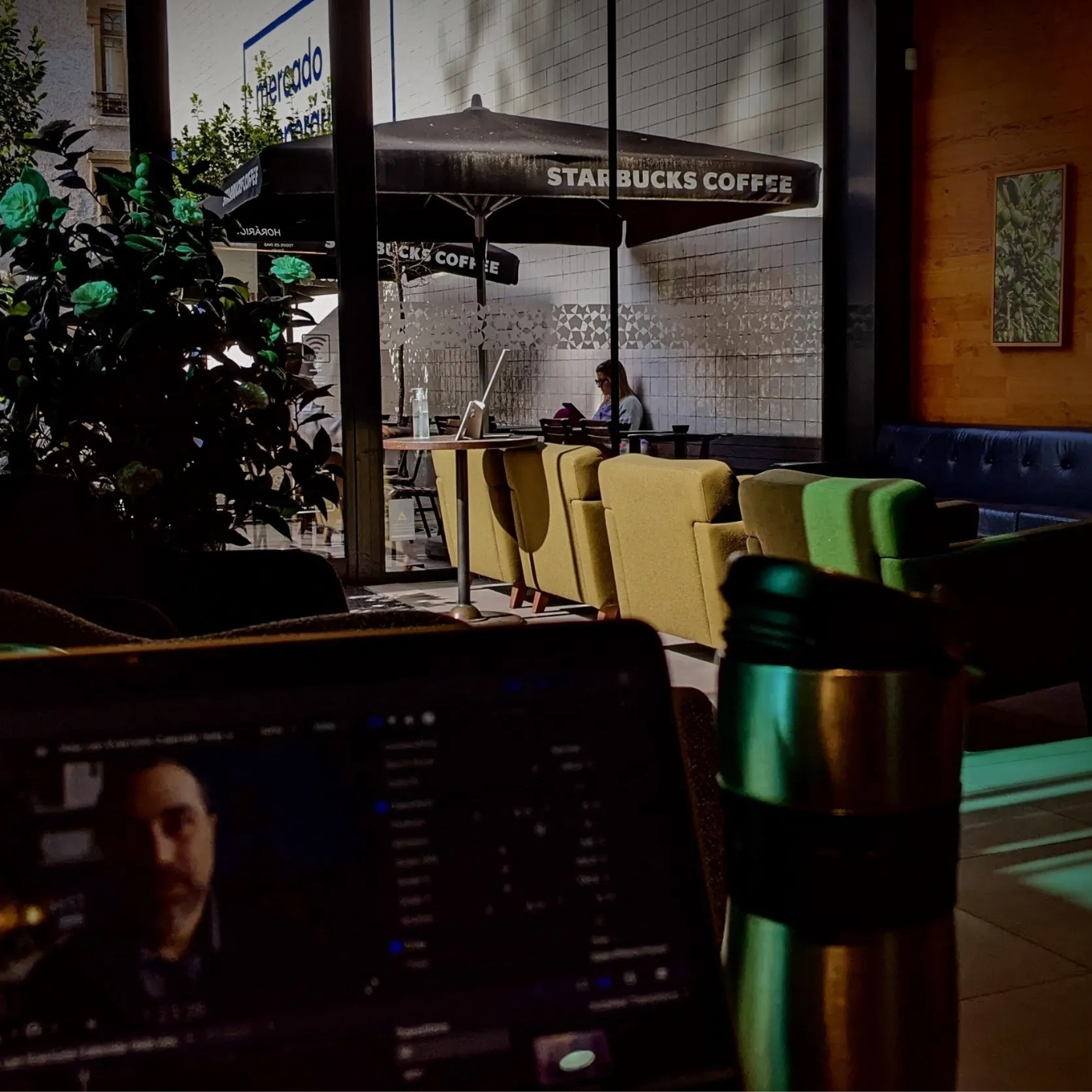
During that moment, I try to guess what a person is doing. Is he working? Is she messaging a friend? Where are they from? I’ve seen it all. From job interviews to friends from different countries meeting accidentally.
It takes no more than a couple of minutes. Suddenly everything becomes background noise again, and I’m back to the computer.
Something tells me I developed this ability when I lived in Boston, back in 2015. But this is a story for another day.
Have a nice week!
